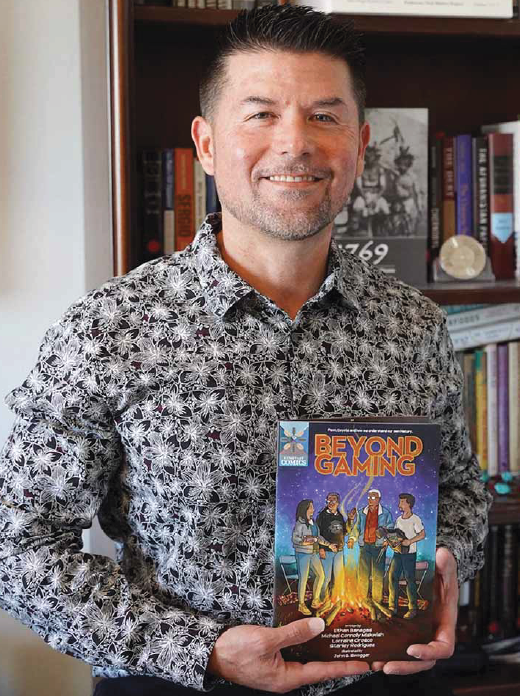
The road for becoming a historian started with researching his family’s history, specifically his father’s side.
by Lisa Deaderick
The road for becoming a historian started with researching his family’s history, specifically his father’s side.
“I wanted to learn the Banegas family lineage, and I learned way more than I expected,” said Ethan Banegas, a descendant of the Kumeyaay, Luiseño/Payómkawichum, and Cupeño/ Kuupangaxwichem bands of Native Americans. “I know part of my father’s family history, way more than most people. I can literally trace my family history all the way back to the mission period and Father (Junipero) Serra. … For me, this is personal. One of the things I wanted to do is trace the historical trauma of my family from the mission period to the present, and it explained a lot of the reasons why the reservation was the way it was, why I struggled so much. It’s been therapeutic, it’s been a force of empowerment because that awareness and that truth being realized is like, ‘Oh, now it all makes sense.’ So, tracing my personal story was very therapeutic, and definitely kind of sad, too.”
He grew up on the Barona reservation in San Diego County, spending about 40% of his time there with his dad after his parents separated when he was a kid. He describes his childhood as challenging, saying that he didn’t really like school and didn’t fit in. He tells people that education saved his life because it led him to his calling—history. He’s earned degrees in history from the University of San Diego, is co-owner of Kumeyaay.com, a historian for the San Diego History Center, conducted the Kumeyaay Oral History Project and the Kumeyaay Visual Storytelling Project community-based research projects, and recently published two comic books (“Beyond Gaming” and “Our Past, Present, and Future”) sharing the history of the Kumeyaay people from their perspective.
Banegas, 45, is also a professor at San Diego State University and lives in the La Mesa/El Cajon area with his wife, Celena, and their children Koa and Aakylee. He took some time to talk about how seeing the pain and suffering in his community compelled him to try and shift the imbalance of historical trauma to the truth, healing, and positivity that can come from telling their own stories and history.
